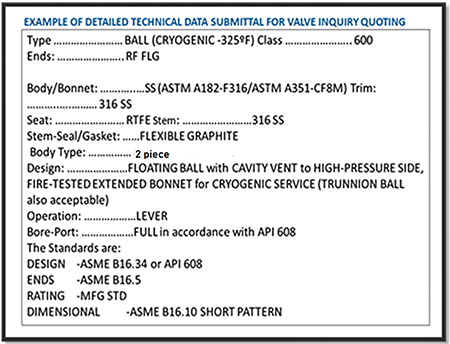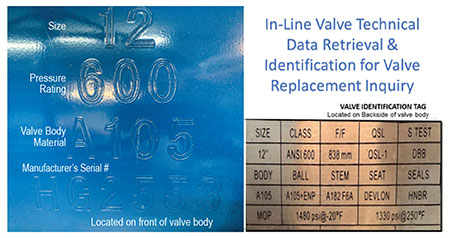
The oil and gas industry is cyclical, dependent on the stock market’s energy, natural resources and oil barrel trading and pricing. However, the COVID-19 pandemic caught the industry by surprise, creating new challenges. The emphasis on the importance of total cost of ownership has come into scrutiny with more glaring awareness when selecting valves for oil and gas projects, as well as for maintenance replacement in plant facilities.

With the current declining oil prices, product pricing is only one aspect when reviewing all of the contributing factors that affect cost of ownership. Remaining afloat during these stressful economic times requires critical thinking applied to strategic long-term planning.
Definition of Cost of Ownership
According to former CNNMoney Editor Alexandra Twin, “The total cost of ownership, or TCO, includes the purchase price of a particular asset, plus operating costs over the asset’s life span. Looking at the total cost of ownership is a way of assessing the long-term value of a purchase.”
When selecting the proper valve, the following factors in determining the estimated TCO should be equated:
- valve cost
- valve maintenance costs (potential leakage, repair)
- standard life span of the valve to determine replacement valve costs (number of years the valve will properly function inline)
End users frequently make the mistake of focusing solely on the current product’s price without planning for the potential loss of maintenance programs or lack of funding for frequent replacement of leaking valves due to misapplication in the field.

Two-Piece or Three-Piece?
The following are some of the questions that should be answered first in the critical-thinking stages for long-term project management planning when deciding between a two-piece or three-piece ball valve at a chemical processing facility:
- Is it process or utility stream?
- Is it a hazardous or nonhazardous source?
- Can this valve be easily taken out of service for maintenance?
- Is it for a process safety management or nonprocess safety management application?
- Is the service polymer or plugging?
- Are these automated or manual operations?
Replace or Repair?
Next, weigh the pros and cons of each design using the current budget versus the long-term estimated costs of maintenance when deciding on whether a two-piece or three-piece design is the right choice for the application. To equate the TCO, determine what the true costs would be for a potential emergency versus scheduled shutdowns to replace leaking valves. Taking into account the pros and cons of each design by comparison (Image 1) will provide further insight into the TCO in valve selection and what will be the right choice to reduce operation, maintenance and sustainability costs.
After weighing the pros and cons, it will be time to create a valve specifications data sheet, and then the bidding can start.

Valve Quoting Tips
As the valve quotation process plays one of the biggest roles in valve selection, thus affecting TCO, the best course of action the end user can take is to provide the distributor and/or manufacturer with accurate, detailed technical data. The technical data is crucial for accurate valve quoting and should include the type of valve, pressure class, size, type of ends, material for the body, trim, ball, seat, seals of the valve, the bore-port and the valve design.
Outdated technical data sheets with incorrect valve specifications required for the industrial application cannot be submitted for accurate quoting.
An example of an outdated technical data sheet influencing the valve quoting process is an inquiry for a “fire safe ball valve that is fire tested to API 607 (no graphite allowed).” Without graphite, the ball valve cannot pass a fire test, nor can the valve be considered fire safe. Upon review of the submitted technical data sheets, last revised in 1964, the discrepancy was highlighted for the end user.
Another quoting tip is to ensure valve inquiries being quoted through various distribution channels are equivalent to one another in construction of materials and body design. As a 15-year veteran valve specialist in project management advised: “Make sure you are quoting apples to apples.”
When reviewing valve inquiry bids, each valve quotation should include the manufacturer’s part, with a detailed description of the valve, valve pricing and delivery, along with the valve cut sheets for ease of comparison.

Replacement Valve Quoting 411
When submitting a valve replacement inquiry, especially in an emergency situation, technical information can be gathered from the inline valve, through observance and knowing where to locate the technical data tags and inscriptions on the valve.
The appearances of the most commonly used cast and forged carbon steel materials are clearly distinctive from one another. Cast is more porous with texture while forged is smooth.
The identification tag found on the back of the valve body will provide the needed, in-depth valve specifications for accurate quoting, while confirming the type of valve, temperature and pressure range from observation—as well as the information provided on the front of the valve. For smaller-sized valves, the identification tag can be found on the neck of the valve or flange, dependent on the type of valve end.
Although many valves appear to look alike on the outside, the insides are not. Pay particular attention to the small components of the valve to ensure it will perform well in the application.

The Bottom of the Pipeline
There is no such thing as providing too much data. The more data received will culminate in accurate valve quoting. Open communication between the end user, distribution channel and manufacturer will reduce the risk for misquoting, thus decreasing cost of ownership for future production.
References
1. Alexandra Twin, July 28, 2020, Total Cost of Ownership-TCO, www.Investopedia.com.

